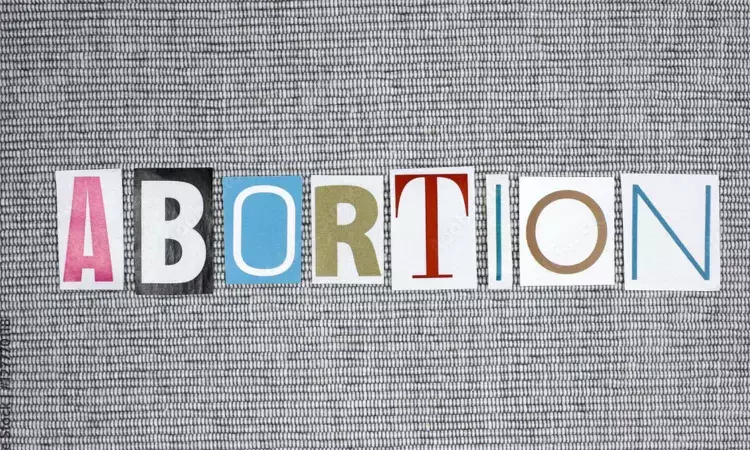- Home
- Medical news & Guidelines
- Anesthesiology
- Cardiology and CTVS
- Critical Care
- Dentistry
- Dermatology
- Diabetes and Endocrinology
- ENT
- Gastroenterology
- Medicine
- Nephrology
- Neurology
- Obstretics-Gynaecology
- Oncology
- Ophthalmology
- Orthopaedics
- Pediatrics-Neonatology
- Psychiatry
- Pulmonology
- Radiology
- Surgery
- Urology
- Laboratory Medicine
- Diet
- Nursing
- Paramedical
- Physiotherapy
- Health news
- Fact Check
- Bone Health Fact Check
- Brain Health Fact Check
- Cancer Related Fact Check
- Child Care Fact Check
- Dental and oral health fact check
- Diabetes and metabolic health fact check
- Diet and Nutrition Fact Check
- Eye and ENT Care Fact Check
- Fitness fact check
- Gut health fact check
- Heart health fact check
- Kidney health fact check
- Medical education fact check
- Men's health fact check
- Respiratory fact check
- Skin and hair care fact check
- Vaccine and Immunization fact check
- Women's health fact check
- AYUSH
- State News
- Andaman and Nicobar Islands
- Andhra Pradesh
- Arunachal Pradesh
- Assam
- Bihar
- Chandigarh
- Chattisgarh
- Dadra and Nagar Haveli
- Daman and Diu
- Delhi
- Goa
- Gujarat
- Haryana
- Himachal Pradesh
- Jammu & Kashmir
- Jharkhand
- Karnataka
- Kerala
- Ladakh
- Lakshadweep
- Madhya Pradesh
- Maharashtra
- Manipur
- Meghalaya
- Mizoram
- Nagaland
- Odisha
- Puducherry
- Punjab
- Rajasthan
- Sikkim
- Tamil Nadu
- Telangana
- Tripura
- Uttar Pradesh
- Uttrakhand
- West Bengal
- Medical Education
- Industry
Short and Long Interpregnancy Intervals Linked to Higher Risk of Spontaneous Abortion: JAMA

Researchers have found that both short and long interpregnancy intervals (IPI) following a healthy live birth are associated with an increased risk of subsequent spontaneous abortion (SA). This significant finding highlights the importance of optimal birth spacing to improve perinatal outcomes. The study was recently published in JAMA Network Open by Xuan H. and colleagues.
The interval between pregnancies is a potentially modifiable factor that has been linked to various adverse perinatal outcomes. However, the specific impact of IPI on the risk of spontaneous abortion has not been well understood. This study aimed to fill that gap by analyzing data from a large cohort of women who participated in the Chinese National Free Prepregnancy Checkups Project over a decade.
This prospective cohort study included 180,921 women aged 20 to 49 years who had a single healthy live birth and were planning another pregnancy. The study period spanned from January 1, 2010, to December 31, 2020, with statistical analysis conducted from June 20 to October 5, 2023. The primary exposure was the interpregnancy interval, defined as the time between the delivery date of the first live birth and the conception of the subsequent pregnancy. IPIs were categorized into five groups: less than 18 months, 18 to 23 months, 24 to 35 months, 36 to 59 months, and 60 months or longer. The main outcome measured was spontaneous abortion (SA).
Among the 180,921 women included in the analysis, 4,380 SA events were recorded, representing 2.4% of the participants. The study revealed a J-shaped association between IPI and the risk of SA:
Short IPIs (<18 months) were associated with a 15% increased risk of SA (OR, 1.15; 95% CI, 1.04-1.27).
Long IPIs (36-59 months) had a 28% increased risk (OR, 1.28; 95% CI, 1.15-1.43).
Very long IPIs (≥60 months) showed a more than two-fold increased risk (OR, 2.13; 95% CI, 1.78-2.56).
The optimal IPI for minimizing the risk of SA was identified as 18 to 23 months. These findings remained consistent even when analyzed by the mode of previous delivery.
The results of this study underscore the significance of optimal birth spacing for reducing the risk of spontaneous abortion. Short intervals may not allow sufficient time for the mother's body to recover, while long intervals might reflect underlying health issues or decreased fertility.
This cohort study indicates that both short and long IPIs after a healthy live birth are linked to an increased risk of spontaneous abortion. These findings provide crucial insights for healthcare providers and policymakers to develop guidelines and interventions aimed at optimizing birth spacing to enhance maternal and neonatal health outcomes.
Reference:
Hu, X., Yang, Y., Wang, L., Zhao, C., Lyu, X., Liu, M., Wu, H., Lei, J., Li, J., Yao, M., Ding, Y., Zhang, H., He, Y., Wang, Y., Peng, Z., Shen, H., Wang, Q., Zhang, Y., Yan, D., … Ma, X. (2024). Interpregnancy interval after healthy live birth and subsequent spontaneous abortion. JAMA Network Open, 7(6), e2417397. https://doi.org/10.1001/jamanetworkopen.2024.17397
Dr Riya Dave has completed dentistry from Gujarat University in 2022. She is a dentist and accomplished medical and scientific writer known for her commitment to bridging the gap between clinical expertise and accessible healthcare information. She has been actively involved in writing blogs related to health and wellness.
Dr Kamal Kant Kohli-MBBS, DTCD- a chest specialist with more than 30 years of practice and a flair for writing clinical articles, Dr Kamal Kant Kohli joined Medical Dialogues as a Chief Editor of Medical News. Besides writing articles, as an editor, he proofreads and verifies all the medical content published on Medical Dialogues including those coming from journals, studies,medical conferences,guidelines etc. Email: drkohli@medicaldialogues.in. Contact no. 011-43720751


